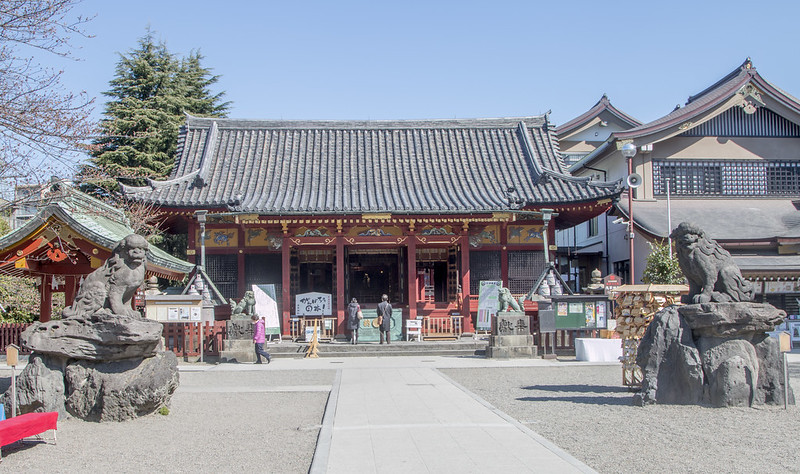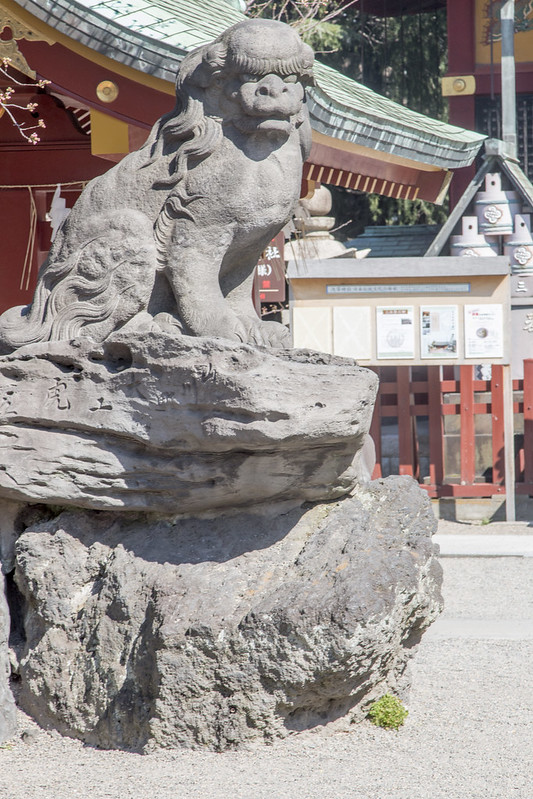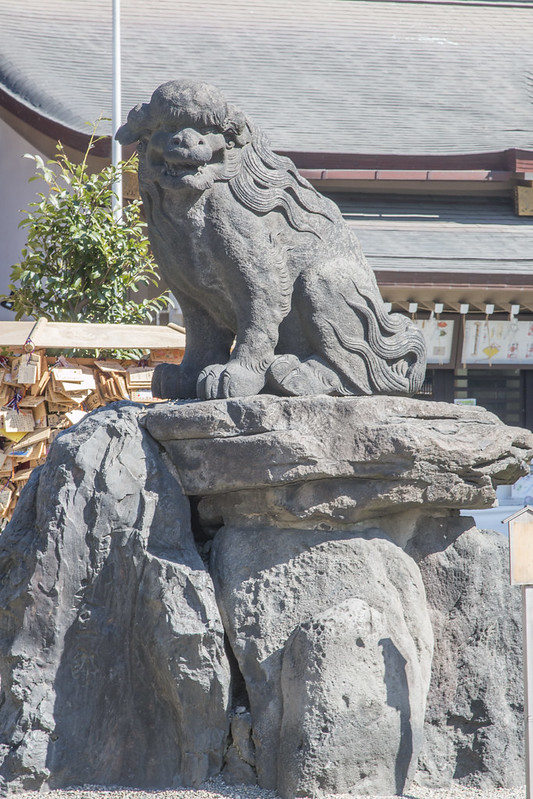
In Asakusa is where Senso-ji Temple (or Asakusa Kannon Temple) is located.
The legend of the temple is that in the year 628, two brothers who were fishing, retrieved the statue of Kannon (the Goddess of Mercy) out of the Sumida River. Each time they put the statue back in the river, it would keep coming back to them. So, Sensoji was built nearby for the Goddess of Kannon.
Made in the year 645, the temple is Tokyo’s oldest temple.
When you arrive, the first temple you will most likely see is the Komagatado Hall. A location where the statue of Bodhisattva Kannon was found and marks the origins of the temple. This hall is only available for public viewing on the 19th of every month. A major festival is held on April 19th.
Also, right at the front is the Kaminarimon Gate and you will see the Fuji (wind god) and Raijin (thunder god) at the left and right side of the gate.
As you continue to walk up, you will be greeted by the huge Hozomon Gate ~Niomon Gate~. Built in 942 by military commander Taira no Kinmasa, he offered prayers at Senso-ji in hopes of becoming the lord of Musashi province (Tokyo) and built the gate for his wishes to come true.
But like many of the structures in this area, they were destroyed by fires and rebuilt again and again. This current version was rebuilt after it was burned down during the World War II Tokyo air raids of March 1945 (the previous structure was built in 1649).
Once you get to the rear,you will reach the Main Hall ~Kannondo Hall~ which is a national treasure built by third Edo shogun Tokugawa Iemitsu but unfortunately was obliterated in the Air Raids of World War II in 1945. The hall was reconstructed in 1958 and mirrors the original stall but with solid reinforced concrete structures and titanium roof tiles.
To the left is the five-story pagoda build in 942 and another building lost to fire and reconstructed. It was declared a national treasure in 1911, destroyed during the World War II Air Raids and reconstructed and rebuilt in 1973. This version now features facilities for mortuary tablets and relics.
There are numerous structures you can find at Senso-ji and you can learn more about them here.
Here are a few of my photos of Senso-ji Temple:
And as you proceed further right, you will then reach Asakusa Jinja Shrine.



Asakuksa Shrine was commissioned by Tokugawa Iemitsu and constructed in 1649 during Japan’s Edo period and uses the gongen-zukuri style of architecture.
The small Shinto shrine honores the three individuals (two brothers, fishermen Hinokuma Hamanari and Hinokuma Takenari and the wealthy warlord named Haji no Nakatomo) who were involved in the founding of Senso-ji.
It was run as part of the Senso-ji Shrine but is now ran independently.
Also, unlike other temples that were bombed and rebuilt, the architecture constructed in 1649, during feudal times did survive the World War II air raids.
Overall, the trip to Senso-ji Shrine is breathtaking and no doubt one of the best shrines to visit in the Kanto region.
For a large map of Senso-ji, I took a photo which you can access. Please click here (Click on image to enlarge).















